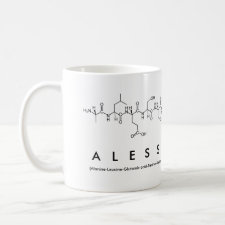
Authors: Musile G, Cenci L, Andreetto E, Ambrosi E, Tagliaro F, Bossi AM
Article Title: Screening of the binding properties of molecularly imprinted nanoparticles via capillary electrophoresis.
Publication date: 2016
Journal: Analytical and Bioanalytical Chemistry
Volume: 408
Issue: (13)
Page numbers: 3435-3443.
DOI: 10.1007/s00216-016-9418-y
Abstract: In response to the need for straightforward analytical methods to assess the affinity of molecularly imprinted nanoparticles (MIP NPs) for ligands, capillary electrophoresis (CE) was exploited using MIP NPs targeting the iron-regulating hormone hepcidin. In this work, MIP NPs were challenged with their template peptide, i.e., the N-terminal 5-mer of hepcidin, in comparison to unrelated ligand peptides. A CE separation method was developed ex novo achieving, after optimization of the background electrolyte (150 mM sodium phosphate pH 7.4) and of the running temperature (35 °C), the full separation of the free ligand from the complexed MIP NPs. The CE binding isotherm allowed the estimation of a micromolar dissociation constant for the 5-mer template-MIP NPs complex, in agreement with independent measurements. The CE offered the advantages of a direct injection of the MIP NPs/ligand incubation mix, without preliminary fractionation steps, requiring only minimal sample volumes and short analysis times. In conclusion CE proved to be a valid technique for characterizing the interactions of MIP NP libraries for selected target compounds
Template and target information: hepcidin
Author keywords: Molecularly imprinted nanoparticles, capillary electrophoresis, binding isotherm, affinity, Hepcidin



Join the Society for Molecular Imprinting

New items RSS feed
Sign-up for e-mail updates:
Choose between receiving an occasional newsletter or more frequent e-mail alerts.
Click here to go to the sign-up page.
Is your name elemental or peptidic? Enter your name and find out by clicking either of the buttons below!
Other products you may like:
 MIPdatabase
MIPdatabase









